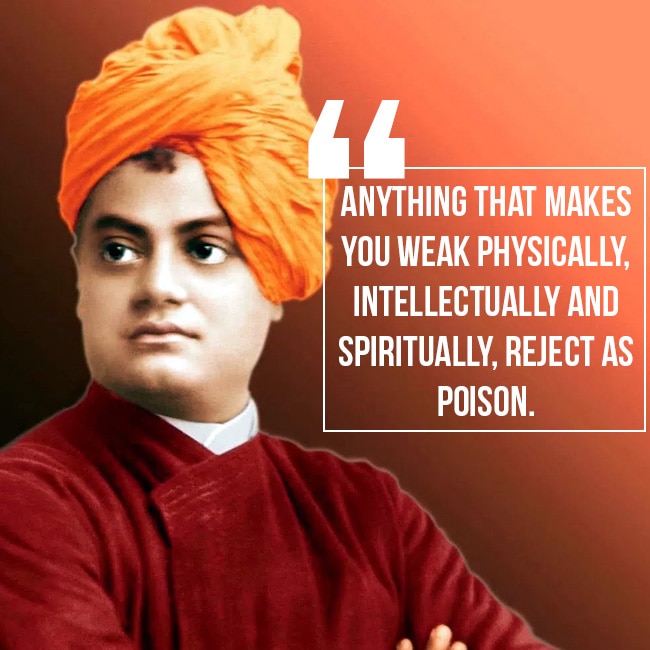Swami vivekananda Biography, Thought, and more
स्वामी विवेकानंद जीवनी, यात्रा, मृत्यु, विचार | quotes in Hindi

Swami Vivekananda (स्वामी विवेकानंद)12 January 1863 – 4 July 1902, Narendranath Datta, was an Indian Hindu monk. He was a prominent disciple of the 19th-century Indian mystic Ramakrishna. Influenced by Western esotericism, he was a key figure in introducing the Indian philosophies (teaching, practice) of Vedanta and Yoga to the Western world, and is credited with raising inter-religious awareness, bringing Hinduism to the status of the dominant world religion. are given. At the end of the 19th century. He was a major force in contemporary Hindu reform movements in India and contributed to the concept of nationalism in colonial India. Vivekananda founded the Ramakrishna Math and Ramakrishna Mission. He is perhaps best known for his speech, which begins with the words “Sisters and brothers of America…”, which he introduced to Hinduism in 1893 at the World Parliament of Religions in Chicago.
Born in Calcutta to an aristocratic Bengali Kayastha family, Vivekananda was inclined towards spirituality. He was influenced by his guru, Ramakrishna, from whom he learned that all living beings were incarnations of the Divine Self; Therefore, service to God can be done only through human service. After Ramakrishna’s death, Vivekananda toured the Indian subcontinent extensively and gained firsthand knowledge of the conditions prevailing in British India. He later traveled to the United States in 1893 representing India in the World Parliament of Religions. Vivekananda conducted hundreds of public and private lectures and classes, spreading the principles of Hindu philosophy in the United States, England, and Europe. In India, Vivekananda is regarded as a patriotic saint, and his birthday is celebrated as National Youth Day.
Swami Vivekananda Early life (1863–1888)
Vivekananda was born Narendranath Datta (younger than Narendra or Naren) into a Bengali family at his ancestral home at 3 Gourmohan Mukherjee Street in Calcutta, the capital of British India, on 12 January 1863. During Makar Sankranti festival. He belonged to a traditional family and was one of nine siblings. His father, Vishwanath Dutta, was a lawyer in the Calcutta High Court. Durgacharan Datta, Narendra’s grandfather was a Sanskrit and Persian scholar who left his family and became an advocate at the age of twenty-five. became a monk. His mother, Bhuvaneshwari Devi, was a devout homemaker. Narendra’s father’s progressive, rational attitude and his mother’s religious nature helped shape his thinking and personality.
Narendranath was interested in spirituality from a young age and used to meditate in front of images of deities like Shiva, Rama, Sita, and Mahavir Hanuman. He was fascinated by wandering ascetics and monks. Narendra was mischievous and restless as a child, and his parents often had difficulty controlling him. His mother said, “I prayed to Shiva for a son and he has sent me one of his demons”.
Swami Vivekananda Travels in India (1888–1893)
In 1888, Narendra left the monastery as Parivrajaka – the Hindu religious life of a wandering monk, “without fixed abode, without bondage, free and strangers wherever they go”. His only assets were a kamandal (water vessel), staff, and two of his favorite books: the Bhagavad Gita and The Imitation of Christ. Narendra traveled extensively in India for five years, visiting centers of learning and acquainting himself with diverse religious traditions and social patterns. He developed sympathy for the suffering and poverty of the people and resolved to uplift the nation.
Living mainly on alms (alms), Narendra traveled on foot and by railways. Key (with tickets purchased by fans). During his travels, he met, and lived with, Indians from all religions and walks of life: scholars, diwans, kings, Hindus, Muslims, Christians, prayers (low-caste activists), and government officials. Narendra left Bombay for Chicago on 31 May 1893 with the name “Vivekananda”, as suggested by Ajit Singh of Khetri, meaning “joy of discerning knowledge”, from Sanskrit Vivek and Ananda.
Swami Vivekananda Death
4 July 1902 (the day of his death), Vivekananda got up early, went to the monastery at Belur Math, and meditated for three hours. He taught students the Shukla-Yajur-Veda, Sanskrit grammar, and the philosophy of yoga, later discussing a planned Vedic college at the Ramakrishna Math with colleagues. At 7:00 pm, Vivekananda went to his room, asking not to be disturbed; He died at 9:20 pm. while meditating.
According to his disciples, Vivekananda attained Mahasamadhi; A rupture of a blood vessel in his brain was cited as a possible cause of death. His disciples believed that his brahmarandhra (an opening in the crown of his head) was due to rupture when he attained mahasamadhi. Vivekananda fulfilled his prediction that he would not live for forty years. He was cremated on a sandalwood pyre on the banks of the Ganges at Belur, where Ramakrishna was cremated sixteen years earlier.
Swami Vivekananda thoughts | स्वामी विवेकानंद विचार


![20+] Inspirational and Motivational Swami Vivekananda Thoughts Quotes Suvichar in Hindi](http://3.bp.blogspot.com/-Ww4H-AoFk1o/XIZCDa14L8I/AAAAAAAAFjU/3ieki6rMWPQnTpT-Ueua6cI68Dcr7vPOwCLcBGAs/s1600/motivational-quotes-of-swami-vivekananda.jpg)
Also Read: How to get free robux
Swami Vivekananda quotes in kannada


| Homepage | Click Hear |



